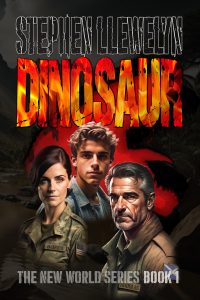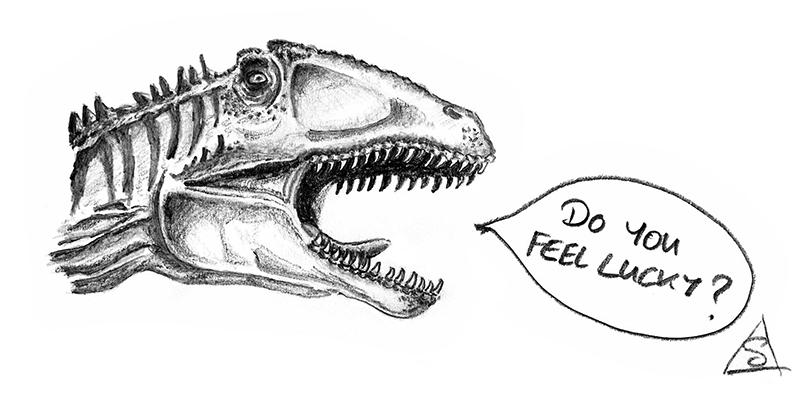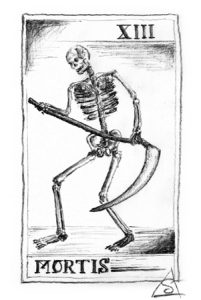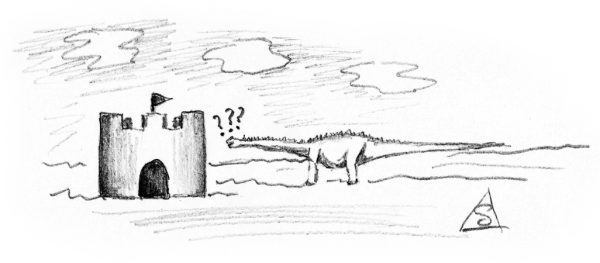A bit more about DINOSAUR
Author's Notes & Featured Creatures

A SALUTE TO PALAEONTOLOGISTS
I feel that I should firstly thank all the palaeontologists, and everyone striving in related disciplines, who are working at breakneck speed, all around the world, to bring these most incredible creatures back from the dead for us to enjoy.
This has been described as a ‘golden age’ of dinosaur discovery and our knowledge and understanding seems to grow and change by the week. No matter how old and creaky I become, I will always be seven years old when anyone shows me a picture of a dinosaur – I thank you all!
The New World Series is obviously a story written solely for entertainment. I have loved dinosaurs almost all of my life, but am certainly no expert (liberties have been taken). My little knowledge may well be a dangerous thing, but if this work inspires a single reader to find out more about our planet’s remarkable history from the many true experts in the field, I will be delighted.
NAMES
Dinosaur names are typically italicised, with the genus name also given a capital letter. In order to identify them correctly, they should be written along with their species name, too. For example, Tyrannosaurus rex (note only the genus is capitalised, the species gets a lowercase first letter; rex being merely a type of Tyrannosaur – albeit the one everyone knows).
Within a novel, italics tend to be more commonly used to provide emphasis to the narrative (although I did stick with the tradition of italicising ship names because there are so few). There are so many recurring animal names within this story that I thought emphasising them all might confuse the narrative. Therefore, I gave each animal name a capital letter instead. I apologise to the purists, but hope you will understand why I made this decision.

ABOUT THE CREATURES
Buitreraptor gonzalezorum probably lived in the Cenomanian or even Turonian stages of the Cretaceous, a little later than the setting for DINOSAUR. The fossils found in South America came from rock strata laid down approximately 94 million years ago. Research continues, but there are as yet few known Dromaeosaurids from the southern hemisphere (at the time of publication). Some palaeontologists believe their ancestors may be traced all the way back to the early Jurassic, before the breakup of Pangaea and this would explain their worldwide dispersal in later times. Although my chronology is slightly off, I wanted to include at least one real animal from Earth’s past to fill this niche. This fast, intelligent, fighting little creature will more fully make its introduction later in the series.
TRAITS
The arctometatarsalian condition has, as far as I know, never actually been found amongst the carcharodontosaurids; although it is a feature which has evolved more than once, apparently. Tim speculates about the possibility of new animals that may have this trait, but also uses the potential speed and/or long distance running capability this condition was believed to imbue, to scare Woodsey into being quiet for a few moments.

LOCATIONS
The locations of fossilised Mapusaurus roseae remains suggest they may have lived in more northerly latitudes than Giganotosaurus carolinii. However, so comparatively few fossils of these magnificent dinosaurs exist that this might simply be lucky accident, as the land may well have been traversable. I included both animals within the region around the landing site of the New World to increase the peril faced by the crew.

Also, because each was such an extraordinary creature, how could I possibly choose between them? It is likely that their hunting territories would have been many miles apart, although every territory intersects somewhere, so it is possible they could have met. Naturally, the forest fire which threw them together in this story was merely a narrative device, but who knows, maybe a large-scale conflagration could have set them on a collision course, at least once, in those long-gone days. It seems more likely they would have avoided one another where at all possible in reality, of course, but such a clash of the titans is almost irresistible for an author.

When I wrote that passage, I hoped to ‘trap’ the reader in the cab of the stranded excavator and surround them with these terrifying predators. For this reason, I introduced the hapless driver very late in the narrative – however, the concept of ignoring an emergency recall in order to get a job finished, and thus avoid the necessity of going back to it, was simply me imprinting my past experience of working on building sites upon a fantasy world!
If a meteorite was going to smash into Birmingham at 7pm, at 5pm, someone on a scaffold somewhere would almost certainly be saying, “Yeah, but we can have this finished by six and get the money in!”
THANK YOU
For all the people who have to work, through it all, no matter what – I salute you!
Thank you so very much for reading,
Stephen

GET THE BOOK HERE
GET THE AUDIOBOOK HERE
See what happens next with further titles from the New World series…




